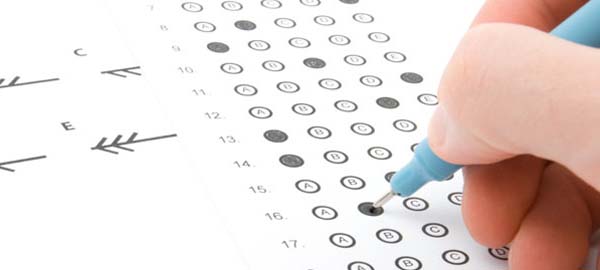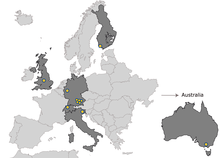First PRONIA Results
Summary description of project context and objectives
Reliable and accessible tools for an individualised early recognition of psychoses are increasingly at the centre stage of international mental healthcare policy and research. This is due to the fact that affective and non-affective psychoses typically commence in the most productive and critical period of life – late adolescence and early adulthood – frequently entailing long-term disability and increased mortality in the affected patients. These factors drive the 6.3% of the global burden of disease caused by these disorders and account for the €207 billion per year in Europe alone spent due to direct and indirect costs. These figures emphasise that psychoses are the most expensive brain-related disorders, with a similar health-economic impact as cardiovascular diseases.
In consequence, a significant component in the reduction of this burden is to provide preventive treatments to those at highest risk of developing these devastating illnesses in the future. However, these targeted interventions will only become regularly and widely available if quantifiable biological markers of the emerging disease and its impact on a patient’s long-term functional outcome will become part of the normal diagnostic workflows in clinical psychiatry. The characterisation of these markers could also have a significant impact on the development of novel preventive interventions by e.g. providing new biological surrogate markers and quantification methods to the drug discovery pipelines of the pharmaceutical industry.
Objectives: Therefore, the multi-centre collaborative project PRONIA (“Personalised Prognostic Tools for Early Psychosis Management”) has been awarded with €6,000,000 FP7 grant of the European Commission to first (i) explore the utility of routine brain imaging and complementary data in predicting different mental health-related outcomes in persons with at-risk and early stages of psychoses, and (ii) evaluate which predictive signatures in these data generalise well across different mental health services and pathways to care. Secondly, based on the knowledge gained through this biomarker validation process, PRONIA will implement new multi-modal risk quantification tools and embed them into an eHealth prototype providing telepsychiatric services along with biomarker-based risk stratification tools to accurately predict mental health-related disability in young help-seeking persons. More specifically, we will:
- Optimise the PRONIA consortium’s candidate imaging markers for a clinically reliable prediction and staging of psychoses by augmenting them with complementary patient data and generalising them across mental health services on the basis of cross-centre, multi-modal pattern recognition (COMPARE).
- Develop & validate new surrogate markers for an individualised risk quantification by analysing brain imaging and complementary data with COMPARE in order to
a) Predict poor functional outcomes such as social and vocational exclusion in patients with recent-onset psychosis and depression as well as help-seekers with different at-risk mental states for psychosis,
b) Model the impact of concomitant psychiatric conditions on predictions in objectives 1 and 2a that relate e.g. to the presence of depression, risk-conferring personality traits and substance abuse,
c) Monitor disease progression and remission across the at-risk and early stages of psychoses in order to dynamically refine predictions in 1, 2a & 2b by combining serial MRI scanning, neuropsychological, psychometric and metabolic assessments. - Disseminate & commercially exploit these surrogate markers by delivering cybernetic prognostic services to health services, research institutions and the biopharmaceutical industry through a telemedicine-based European company.
The third objective expresses PRONIA’s ultimate goal to realise licensing, commercialisation and sustained engineering strategies of these biomarker-based early recognition services through broadly available telemedicine applications. This will provide psychosis risk profiling tools to diverse target groups in the healthcare markets, including care-givers, the pharmaceutical industry and research institutions. By disseminating objective risk quantification, PRONIA’s products will provide firm diagnostic grounds for preventive therapy, improving outcomes and reducing costs. Thus, they will offer a unique selling proposition to the mental health sectors in Europe and beyond.
Work performed since the beginning of the project and the main results achieved so far
WP1 started developing standardised clinical examination workflows in 07/2013. Until 12/2013 these workflows were fully digitalised in the PRONIA portal allowing for centralised data acquisition and management (see WP9). Mainly due to the local heterogeneity of ethical and data security approval processes, recruitment start was deferred to a locally varying degree, ranging from the 15/02/2014 (LMU) to the 29/07/2014 (University of Birmingham). Thus, the originally cumulative recruitment time of 189 months (15th of February 2014 until 30th of September 2016; 31.5 months x 6 centres = 189 months) was reduced to 179 months. During this time, the whole consortium screened 4048 participants. This resulted in 1072 participants included in the study with an overall attrition rate of 20.9% because of non-participation, drop-outs, or exclusions. 861 of the 1072 individuals (80.3%) who consented to participate completed the baseline examination (T0), 401 (37.4%) the 9-month T1 visit and 170 (15.9%) the final 18-month visit T2. Importantly, in the 2nd funding period, the original QC process consisting of monthly telephone case conferences, quarterly FAQ conferences, and biannual inter-rater reliability testing, was significantly extended by implementing, testing, and applying a multi-stage semi-automated data quality ascertainment and correction procedure. This procedure regularly extracts all clinical and neurocognitive (see WP4) data from the portal, checks these data automatically against a canon of programmed data quality and completeness rules and returns a feedback spreadsheet to each PRONIA rater team. Based on this spreadsheet, the respective team members correct / complete their data entry and return the commented spreadsheet to UKK where their annotations are fed back into the database QC system. Thus, in an iterative process all phenotypic data are cleaned and prepared for the first major analysis phase to start in the 3rd funding period.
WP2 together with WP11 implemented a certification framework for the fully modular and object-based re-engineering and extension of the project’s machine learning platform NeuroMiner (NM). Conceptualisation of NeuroMiner2 (NM2) and its interfaces started in October 2013 paralleled by an in-depth documentation of the program’s functions and capabilities. Subsequently, the programming of NM2 modules commenced in 01/2014. Given the rapidly broadening accessibility of machine learning algorithms in the field, we decided at the beginning of the 2nd funding period to deviate from the original NM2 development plan and instead merged the new NM2 functions with our original NM framework. Using this enhanced and more user-friendly program, we conducted several pilot analyses on the growing PRONIA database and summarize related findings in the WP2 report. We are currently bug-fixing the application and improving its broad usability further. WP2 plans to release NM as an open source easy-to-use predictive analytics framework for clinically-oriented neuroscientists in the first half of the third funding period.
In the 1st funding period, WP3 defined a harmonised MRI framework for standardised cross-site management of MRI protocols and data. In the 2nd funding period, WP3 further extended the MRI pre-processing and QC algorithms which are currently merged into a unified WP3 processing system. More specifically, we integrated all pipelines for structural, functional and DTI image processing into a single workbench. The server hosting the WP3 processing master has been set up and tested. Starting in December 2016 we will regularly apply these automatic procedures to our phantom and human MRI measurements to monitor the quality of the MRI data and generate multi-modal brain descriptors for the analysis phase in the 3rd funding period.
In the 1st funding period WP4 developed a computerized neurocognitive test battery, PCB for use in the PRONIA study. In the 2nd funding period, WP4 further improved PCB and developed together with LMU an automated QC procedure for the regular QC of PRONIA’s neurocognitive datasets. Furthermore, pilot analyses were conducted to assess baseline differences between the 4 study groups covering a host of neurocognitive domains. These preliminary findings mainly showed that persons with clinical high risk state for psychosis – irrespective of the subsequent outcome – rank between patients with first-episode psychosis and patients with first-episode depression in terms of verbal memory, cognitive flexibility, social cognitive and visual memory performance.
In the 1st funding period, WP5 implemented the blood sampling SOPs, including (1) the provision of standardised blood collection kits, (2) local workflows, (3) shipment and storage at the Helmholtz centre. Based on this blood sampling infrastructure, were received and processed samples from 893 study participants until the end of the 2nd funding period. As soon as the quality control procedure of the discovery sample is finalized (December 2016), WP05 will start with genotyping the processed blood samples using the PsychChip Illumina technology. We are currently implementing the IT infrastructure to upload the Single Nucleotid Polymorphism data to the PRONIA portal, thus making them available to the consortium for multivariate pattern analyses.
During the 2nd funding period, WP7 tested semi-supervised pattern analysis pipelines in a preliminary database of 365 subjects examined at LMU and UKK. This cross-sectional database contained phenotypic baseline data on the severity of prodromal symptoms (SIPS) and information on the premorbid adjustment as well as resting-state (rs)-fMRI images, which were processed with the rs-fMRI connectivity pipeline of WP3. The pilot analyses of WP7 showed that subgrouping patients per gender, age, body-mass-index prior to using supervised machine learning methods significantly increased the single-subject diagnostic separability of our study cohorts.
In the 2nd funding period, WP8 tested different strategies to correct for centre effects in the rs-fMRI data. First, different geometric distortion correction methods employing the b0 field map scans were compared with respect to their effects on functional brain connectivity matrices. We are currently investigating which of these correction methods optimizes classification accuracy across different supervised machine learning task. Second, we analysed the data from the PRONIA calibration study using Generalization Theory which generated image maps with most reproducible structural and functional brain descriptors across sites. We used these maps to threshold the subjects’ data prior to training machine learning models and found that limiting the brain descriptors to the set most reproducible set across sites boosted the multi-site generalizability of our classification models (see also WP2).
In the 2nd funding period, WP9 finished the web-based PRONIA(at)home interface which enables the telepsychiatric evaluation of help-seeking individuals and made it available to recruitment efforts of the consortium. Furthermore, the PRONIA App was finalized which enables the on-the-fly digitalization and centralization of phenotypic data recorded during rating of our study participants. Finally, WP9 set up a plan on how to integrate the consortium’s prognostic NeuroMiner modules into the PRONIA portal infrastructure, thus preparing the grounds for the implementation of a web-based prototype for PRONIA’s prognostic tools.
In the 1st funding period, WP10 developed a new strategy for the external validation of PRONIA’s prognostic prototype after the projected funding of the Melbourne site was cut by 60%, by implementing (1) a synergistic external validation study for PRONIA and PSYSCAN in Melbourne, and (2) initiating a broader international collaboration (HARMONY) with the North American Prodromal Longitudinal Study (NAPLS). In the 2nd funding period, the joint NIMH proposal was awarded to the four consortia (HARMONY grant) and PRONIA received a subcontract to set up a database infrastructure for fully anonymised cloud-based data sharing with the other NIMH-HARMONY partners. Furthermore, the joint PRONIA-PSYSCAN recruitment infrastructure in Melbourne was finalized with recruitment projected to start in January 2017.
In the 1st funding period, WP11 established strategies to monitor the consortium’s freedom-to-operate (f-t-o), to manage IP rights within PRONIA and with respect to patent authorities, and to develop a commercialisation roadmap for the project. A first patent application (PCT/EP2014/002154) was filed on 5 August 2014 and is presently pending. Furthermore, WP11 provided support to WP2 & 3 to guide software development toward certification in the sense of the Medical Device Directive 93/43/EC. In the 2nd funding period, the filed patent was revised and entered the nationalisation phase in the US. We are currently discussing the optimal way for achieving certification status of our prognostic tools given the limited personal resources available for this task.
In the 2nd reporting period, WP12 prepared and submitted the 2nd Amendment to the PRONIA Grant Agreement (currently under evaluation by the European Commission). Project meetings and regular phone conferences were carried out to discuss actual progress; :milliarium, a web-based project management and communication tool, serves as a central platform for important documents and the documentation of the work progress. The project website was continuously maintained and updated and the 1st PRONIA Summer School was organized for internal and external young researchers.
The expected final results and their potential impact and use (including the socio-economic impact and the wider societal implications of the project so far)
Accumulating evidence emphasises the potential large-scale benefits of early intervention in the high-risk states of psychoses. However, the development and provision of early intervention to vulnerable populations critically depends on prognostic instruments that enable healthcare professionals to reliably identify persons at risk of chronic disability according to their objective risk profiles. PRONIA will develop, validate and disseminate such a prognostic system on the basis of neuroimaging and complementary data to (i) individually forecast severe mental disorders prior to disease onset, (ii) individually predict chronic disability across early disease stages, and (iii) provide the evidence-based diagnostic grounds for the individualised selection and adjustment of preventive treatment strategies across heterogeneous healthcare settings. In the 1st project period, PRONIA laid the grounds to provide these results by already recruiting and following a substantial number of study participants within the state-of-the-art digitalised and secure data acquisition infrastructure of its SME partners.
In the 2nd funding period, PRONIA largely expanded its multi-modal database and decided to split it into a discovery sample consisting of participants recruited until the 1st of May 2016 and a validation cohort recruited after this date, which will be extended through collaborations within the HARMONY project and other associated partners. Furthermore, the consortium implemented a set of centralised semi-automated quality control workflows, which will make sure that the findings generated by PRONIA will be based on high-quality data. Importantly, as foreseen by the DoW, we started with pilot machine learning analyses using phenotypic information as well as structural and functional MRI data, thus probing the diagnostic separability of our study groups and the predictability of social functioning in the CHR cohort. We evaluated the impact of site-related heterogeneity including scanner and population effects and devised strategies that demonstrated significant potential to overcome these effects and generate reproducible multi-site predictors. These strategies were implemented at different stages of our data processing streams, ranging from the pre-processing of brain-related information, through the selection of highly reproducible predictive features to the attenuation of site-related effects in the machine learning procedures. We could show that a major objective of the project, the single-subject prediction of functional outcomes in persons with a clinical high-risk state for psychosis, can be achieved within the 3rd funding period. Hence, the project has made significant steps toward implementing the envisaged bioinformatics processing and prediction framework which will enable us in the next funding period to develop and validate generalizable biomarkers and predictive models for an improved personalized management of the early stages of affective and non-affective psychoses. In addition, we will make significant parts of this framework available as the open source platform NeuroMiner to foster predictive analytics in the field of clinical neurosciences.
EUROPA - NEWS
What's new in Health and Life Sciences? Click here for news from the European Commission.










